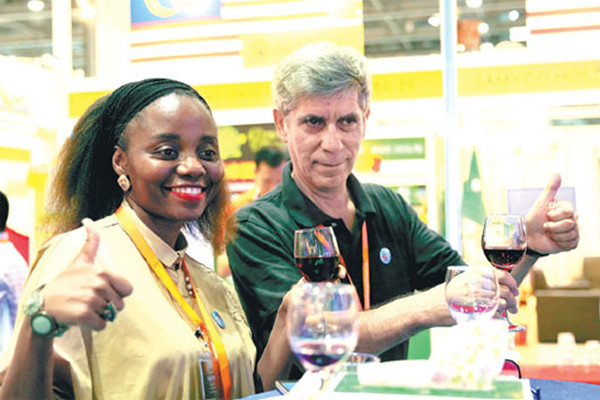Dongguan, a manufacturing hub in southern Guangdong province, has strengthened its business and trade exchanges exponentially with countries and regions involved in the Belt and Road Initiative thanks to the success of an annual international expo.
The latest staging of the Guangdong 21st Century Maritime Silk Road International Expo will run from Thursday to Sunday in Houjie town, Dongguan, with exhibitors from China and 57 other countries and regions involved in the BRI.
Dongguan, the host city of the Guangdong 21st Century Maritime Silk Road International Expo, has long been committed to promoting opening-up and win-win development. The city has paid close attention to developing the expo into a platform to support open economic development across the region and expand cross-border cooperation.

The Guangdong 21st Century Maritime Silk Road International Expo is widely recognized by participants as an important platform to promote trade and investment among countries. Photos Provided to China Daily
Official figures showed that the city's value of imports and exports with countries and regions taking part in the BRI increased 65.2 percent from 127 billion yuan ($18.3 billion) in 2013 to nearly 210 billion yuan last year.
In the first half of this year, the situation continued to improve and the value of imports and exports rose 16.7 percent year-on-year to reach 114.3 billion yuan, the official figures indicate.
The statistics also showed that the contribution of countries and regions involved in the BRI to the city's foreign trade volumes surged from 13.4 percent in 2013 to 17.1 percent last year.
The expo, launched in 2014 under the BRI, has been developed into an important platform to promote governmental cooperation, business and cultural exchanges between Dongguan and other countries and regions involved in the BRI, according to the fair's organizing committee.
In a bid to promote the expo and attract international exhibitors and buyers, the organizing committee staged roadshows in different countries every year.
The delegation visited the Netherlands, France, Belgium, Portugal and the Philippines for the first time this year.
The expo also serves as a platform where visitors from foreign countries and regions can experience the culture and environment of Dongguan, while residents of the city can broaden their horizons and have a better understanding of these countries through the expo, which will be open to the public for its last two days, according to the local government.
According to the Dongguan government, local companies with closer links to their counterparts in countries and regions involved in the BRI are showing growing interest in making investments there.
Huajian Group - one of the Chinese leading shoemakers in Dongguan that supplies brands like Guess, Calvin Klein, Nina and others - started building a park for the light industry in Ethiopia in 2015 with a total investment of $2 billion.
To date, a shoe manufacturing plant covering some 180,000 square meters has gone into operation, employing 8,000 local workers. Exports from the factory alone now account for 65 percent of total exports in that category for that country, according to a report by China News Service.
Zhang Huarong, president of Huajian, said the group plans to employ 100,000 workers in African markets in the next 10 years.
"The mutual investment between Guangdong and other countries and regions involved in the BRI is becoming ever more active," said Chen Yuehua, deputy director of Guangdong's Department of Commerce.
These countries set up more than 1,000 companies in Guangdong in 2017 with contractual investments of 17.5 billion yuan, up 52.7 percent and 109.7 percent, respectively, from a year earlier.
Guangdong companies set up 118 subsidiaries in these countries with the contracted value of investment reaching $2.64 billion last year.
Guangdong's imports to and exports from countries and regions involved in the BRI were worth 1.5 trillion yuan in 2017, equating to 22.1 percent of its total foreign trade. In 2013, that figure was 1.1 trillion yuan, or 16.4 percent of the total, according to Chen.

















